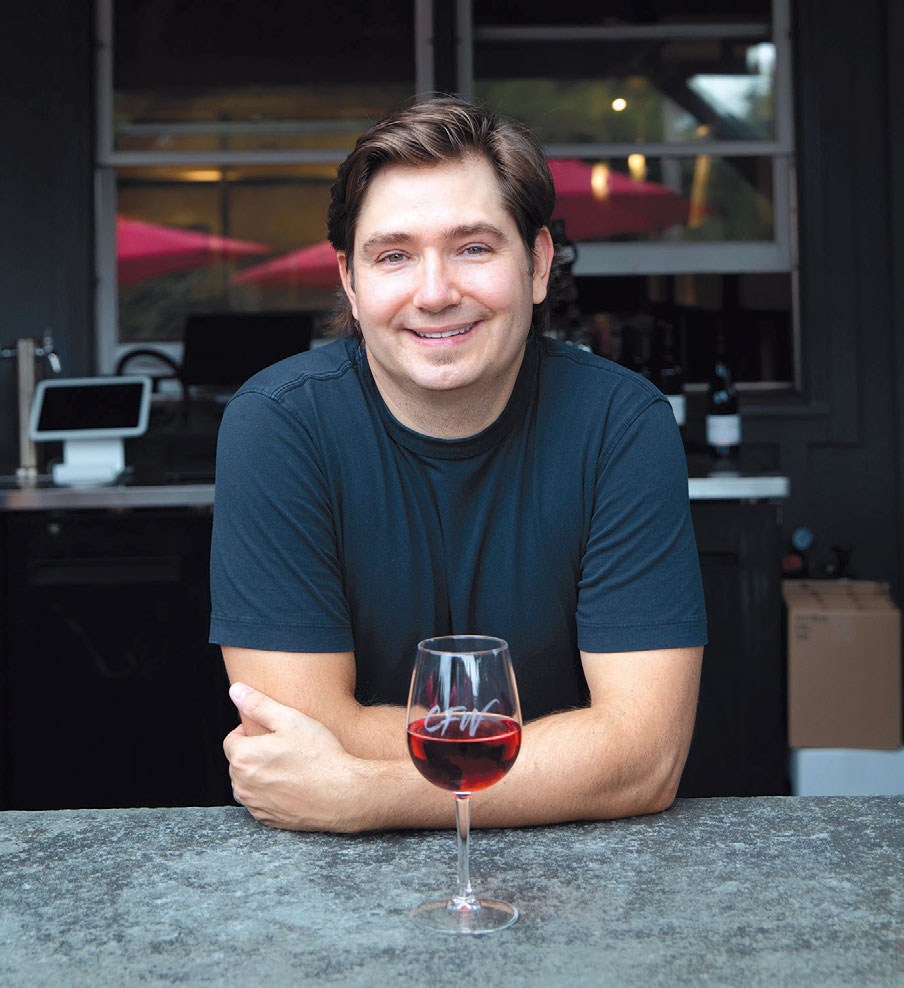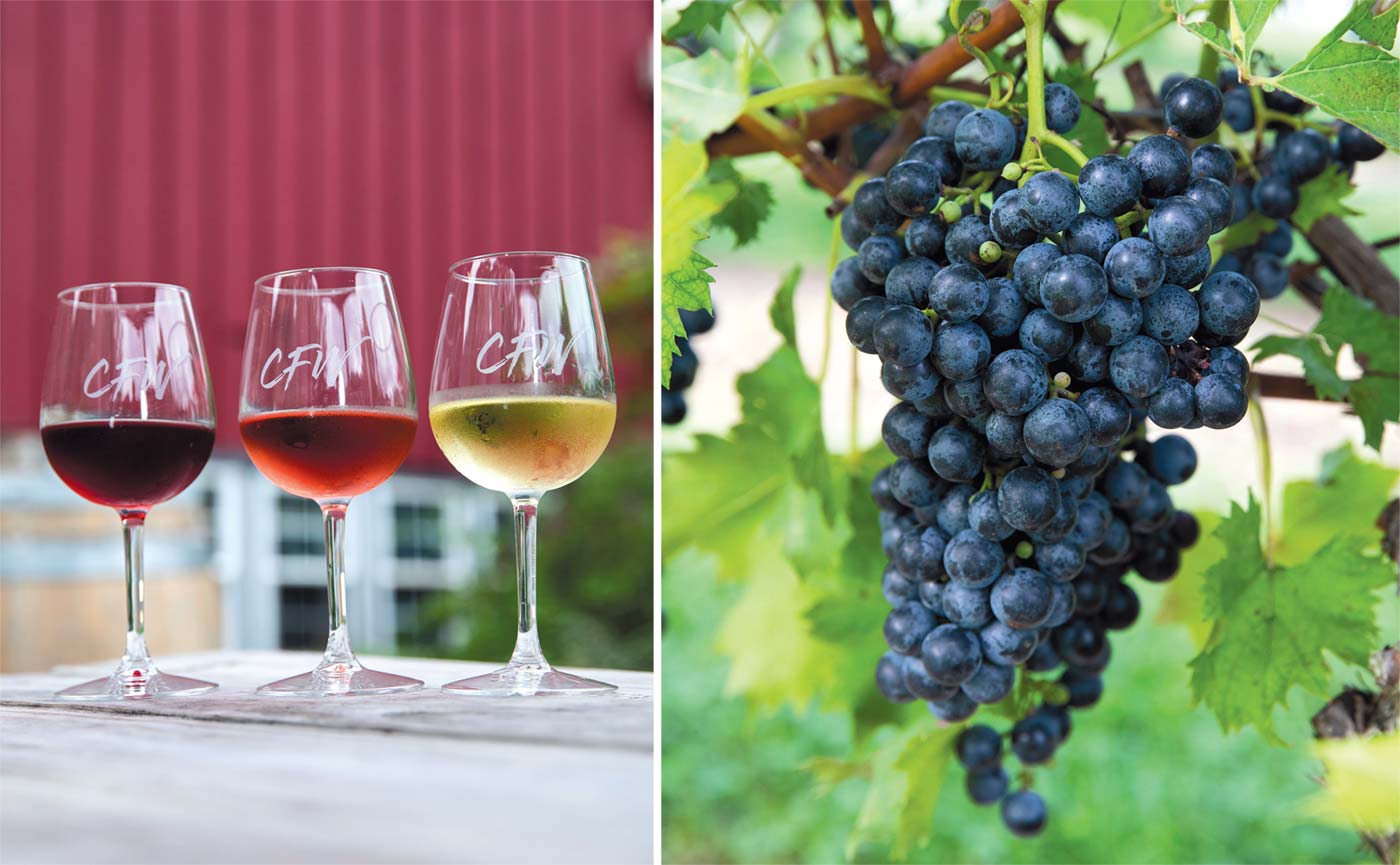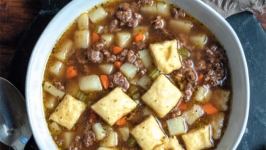Reconsidering Sweet Wines
“TASTING SWEET WINES AT A WINERY sometimes lacks substance,” says Corey Krejcik, vice president and general manager of Chaddsford Winery in Chadds Ford, PA. Why? Wine professionals focus on dry wines, a preference that’s become synonymous with quality. In tasting rooms, this has meant that the sweeter wines, which have always sold briskly, have been dismissed as unimportant, and those who enjoy them have been overlooked as nonserious wine drinkers.
“Customers will go through a tasting and be told, ‘These are our sweet wines,’ and the conversation kind of ends there,” says Krejcik.
But that is starting to change. Chaddsford is one of several local wineries now including the sweeter side of its portfolio—wines made from grape varieties such as niagara, steuben and vignoles— in tasting room conversations. Those pouring the wines are talking about the grape growers. They’re talking about the varietals and why the winery elected to use them. They’re giving these wines the same respect they give the drier wines in their portfolio, while in turn showing respect to sweet wine drinkers.

Corey Krejcik, vice president and general manager of Chaddsford Winery
DRINK WHAT YOU LIKE
Krejcik has a no-shame attitude toward the sweet wine made at Chaddsford. It’s not an outlook shared by everyone in the industry. There’s a stigma around sweet wines that leads wineries to downplay them. In turn, many people who drink them end up apologizing for enjoying them.
“Many times, I’ve had people come in and say, ‘I’m sorry, I only drink sweet wine,’” he says. He passionately believes they have no reason to be apologietic.
Maybe if they knew the numbers, sweet wine drinkers would have more pride in their palates.
According to a January 2020 internal survey of PA Winery Association member wineries, between 50 and 75 percent of all yearly wine sales in the state are in the sweet category. The survey suggests that those who prefer sweet wines are in the majority. The inventories of Pennsylvania wines in state stores and grocery stores suggest the same thing—the bulk of bottles on sale are in the off-dry and sweet categories.
That’s what people are asking for.
Sand Castle Winery in Erwinna, PA, plants only vinifera—European grapes such as riesling, chardonnay, pinot noir and cabernet sauvignon. In 1985, when founders Joseph and Paul Maxian first planted those varietals, they were intended for dry wines only. But when winery representatives came back from festivals, they reported that drinkers were asking for a sweet red. That’s how Sand Castle’s popular sweet Claret was born.
“Every time we tried to make a sweet red, it was so yucky,” says Joseph Maxian. “Then, we finally hit the right combination and it took off.”
Sand Castle now has a portfolio of both dry and balanced sweet wines that’s split close down the middle, according to Maxian. Wineries that offer a mix of sweeter and drier wines find that the variety helps bring in groups. After all, every group has a mix of preferences, and there’s always at least one sweet wine fan.
Melissa Kent, who works at a boutique in Haddonfield, NJ, underscores that point. She visits local wineries monthly. She’s been around wine all her life.
“Being Italian, there was always wine with every meal,” she says. She learned to enjoy well-made dry wine from a young age, but now she drinks “literally everything.”
She usually goes to a winery with a group of three or four friends or family, and if a winery sold only dry or only sweet, it could be a problem.
“I guess it could work,” Kent says, “but if a winery had only dry wines, a sweet drinker might go just because it was an outing, but they wouldn’t partake in any wine. The same goes for sweet. Those who are only into dry reds may not even go to a winery that only had sweet.”
Her favorite local wine is Jersey White Reserve from William Heritage Winery in Mullica Hill, NJ. The wine is a blend of sauvignon blanc, riesling, chenin blanc and moscato.
“It’s not overly sweet,” says Kent. “A wine with too much [sugar] can make you feel sick, but this is a perfect blend for me.”
Th ough Kent attributes the not-overly-sweetness to the blend, there’s more to it than that. The creation of a great sweet wine requires a winemaker highly skilled in achieving balance.
A drinker should get a sense of sweetness at first sip, but once the wine had been swallowed, the acid will help to clear the sugar off the palate.

Bellview wine maker David Gardner evaluating grapes for sweetness before harvest.
QUALITY COUNTS
Kent also enjoys the sweeter side of Landisville, NJ’s Bellview Winery’s portfolio, where a wine’s balance is taken seriously by winemakers. When it comes to wines, especially those on the sweeter side, balance means hitting just the right notes of sugar, alcohol and acid in the right combination. It’s harder to do than it sounds.
Bellview’s winemaker, David Gardner, says sweet wines have an important place at Bellview because customers want them. He and his team go through a rigorous process to make sure they’re giving wine drinkers what they want without sacrificing quality or balance.
When it’s time to make a sweet wine, Gardner looks at records of the wine’s past vintages for guidance. Then, he prepares bench trials, making small batches of the wine in different ways with a range of sweetness. He sits down with three or four others from the winery, and they choose what they think is the most appropriate batch, with balance being key.
“Acidity is what creates balance with sugar,” he says. The team chooses a batch with a balanced, crisp finish. A drinker should get a sense of sweetness at first sip, but once the wine has been swallowed, the acid will help to clear the sugar off the palate.
At four-decades-old Nissley Vineyards in Bainbridge, PA, it’s a priority to have a wine for every palate that walks through the door.
“In the early days of the winery, we erred more [toward] dry and semi-dry because that’s what the family liked to drink,” says the winery’s vice president, Jonas Nissley. “But it became clear that customers weren’t necessarily finding what they wanted.”
Now, semisweet and sweet wines make up 75 to 80% of what they produce.
“There’s two reasons for this,” he says. “As we began to produce more sweet wines, we became known for good sweet [wine]. At the same time, what a lot of people don’t realize is that the general palate of the American wine consumer sways more sweet than dry.”
People in the wine industry often say, “Americans talk dry but they drink sweet.”
Yet, in tasting rooms, in wine stores and in the wine media, dry wines are elevated, making it seem like they’re the only ones that count. It doesn’t help that there’s a lot of bad sweet wine on the market, made with added sugar to mask flaws. Consequently, there’s a lot of bad dry wine made, too, yet that doesn’t sully the reputation of dry wine as a whole.
Like Bellview, Nissley Vineyards puts special care into achieving balance in its sweet wines.
Its process is similar to Bellview’s. The winemaker puts together trials, and winery employees come together to smell, taste, talk and vote on each iteration, thinking about their target drinkers.
“We’re always voting with the customers’ wants in mind,” Nissley says. “Sometimes it aligns with our personal preferences; sometimes it doesn’t.”
Like Chaddsford’s Krejcik, Jonas Nissley champions sweet wine drinkers.
To those who are ashamed to enjoy a little sugar in their wine, he offers this reassurance: “Someone did you a disservice by telling you that your palate is lesser.”
People in the wine industry often say, “Americans talk dry but they drink sweet.”
WHERE’S THE MONEY?
The sales of sweet wines keep the lights on at many wineries, and Krejcik believes it’s time for that important detail to stop being the industry’s dirty little secret.
“Why can’t we be proud of the fact that we make quality sweet wine and dry wine?” he asks.
At Chaddsford, at Sand Castle, at Bellview, at Nissley and at many other wineries throughout the region, sweet wines are financially important.
First of all, they’re generally less expensive to produce. Since they usually aren’t aged, the winery doesn’t incur the expense of holding wine in barrel for a year or more before bottling. When these wines are released quickly, their sales help bring in cash just months after harvest.
The grapes that go into many sweeter wines are less expensive to grow if they are varietals that are hardy on the East Coast. Grape growing in the region is challenging because the growing season is short and rains, humidity, or an untimely frost can wreak havoc on a vintage’s quality and yield. Hardy grapes like the niagara, steuben and vignoles that Chaddsford uses can better handle these conditions. Because they’re less expensive to grow and have good yields, more wine can be made from them at a lower cost.
The financial benefits of using these hardier grapes reach beyond the wineries. Wineries that pay growers for grapes are contributing to the region’s agricultural economy. Chaddsford employs growers in PA’s Lake Erie region and NY’s Finger Lakes region to grow a good portion of their sweet wine grapes.
“We work with some great growers, great families,” says Krejcik. “People are pouring their livelihood into growing these types of grapes. The grapes that they grow are able to put food on their table, and we’re able to take them and turn them into something that people celebrate.”
Those celebrated wines lead to brand loyalty, creating return customers.
“Our niagara wine drinkers are tremendously loyal. It might be the only wine they drink. We’ve had some high-level dialogue with our niagara drinkers because of their constant exposure to it. They’re probably having it a couple of times a week, so their palate is trained to pick up on any variances in the wine,” Krejcick says.
“We approach the sweet side of our portfolio much like the way the beer industry approaches their flagship brands. We want to make sure the sweet wines taste consistent,” he says. But, Chaddsford’s loyal niagara customers can pick up the little variances from vintage to vintage because their palates are so well accustomed to that one wine.
Krejcick is impressed with those customers.
“I would never say to one of them, ‘You’re not a [serious] wine drinker.’”

5 Sweet Wines to Seek Out
1
CHADDSFORD SUNSET BLUSH
Made from the same steuben grapes as their Redux Dry Rose, Sunset Blush is a sweet, thirst quenching wine full of peach and grapefruit aromas with a dry finish. ($14)
2
NISSLEY VINEYARDS VIGNOLES
This semisweet vignoles (made from the grape of the same name that some compare to riesling) has hints of tropical fruit. ($14.90)
3
BELLVIEW WINERY FIESTA
This blend of red grapes and cranberries is one of Bellview’s most popular wines. It’s refreshing as is, and it’s also a great base wine for sangria. ($11)
4
SAND CASTLE WINERY ALPINE SPICE
A white wine cooked with spices (the heat brings the ABV down to 7 percent), this wine tastes like liquid apple pie. In cooler weather, it’s delicious heated. ($19).
5
WILLIAM HERITAGE VINEYARDS JERSEY WHITE RESERVE
An unoaked blend, this vibrant wine has aromas of lychee and honey dew. With flavors of tropical and stone fruits, it’s a popular wine for the winery. ($18)
3 Tips for Food Pairings
Wine Educator Debbie Gioquindo, who helps guests pair their wines with the food served at her restaurant, Kitchen 330 in Stone Harbor, NJ, has these tips for pairing sweeter wines with food.
1
Pair sweet blush wines with chicken or pork served with a fruited sauce. Peach-sauced pork or red-berry sauced chicken will complement the fruit flavors in the wine. She also suggests adding a little of the wine you’re going to drink to the sauce.
2
A classic pairing for a semi-sweet or sweet Riesling is spicy food. Pair pad Thai, jalapeno poppers, General Tso’s Chicken, spicy shrimp or a Low Country boil with a wine that will help tame the spice in the dish.
3
Sweet wine works well with desserts like creme brulee, panna cotta or cheesecake. Try pairing a red sweet wine with a red berry pie or a white sweet wine with apple or peach pie.







